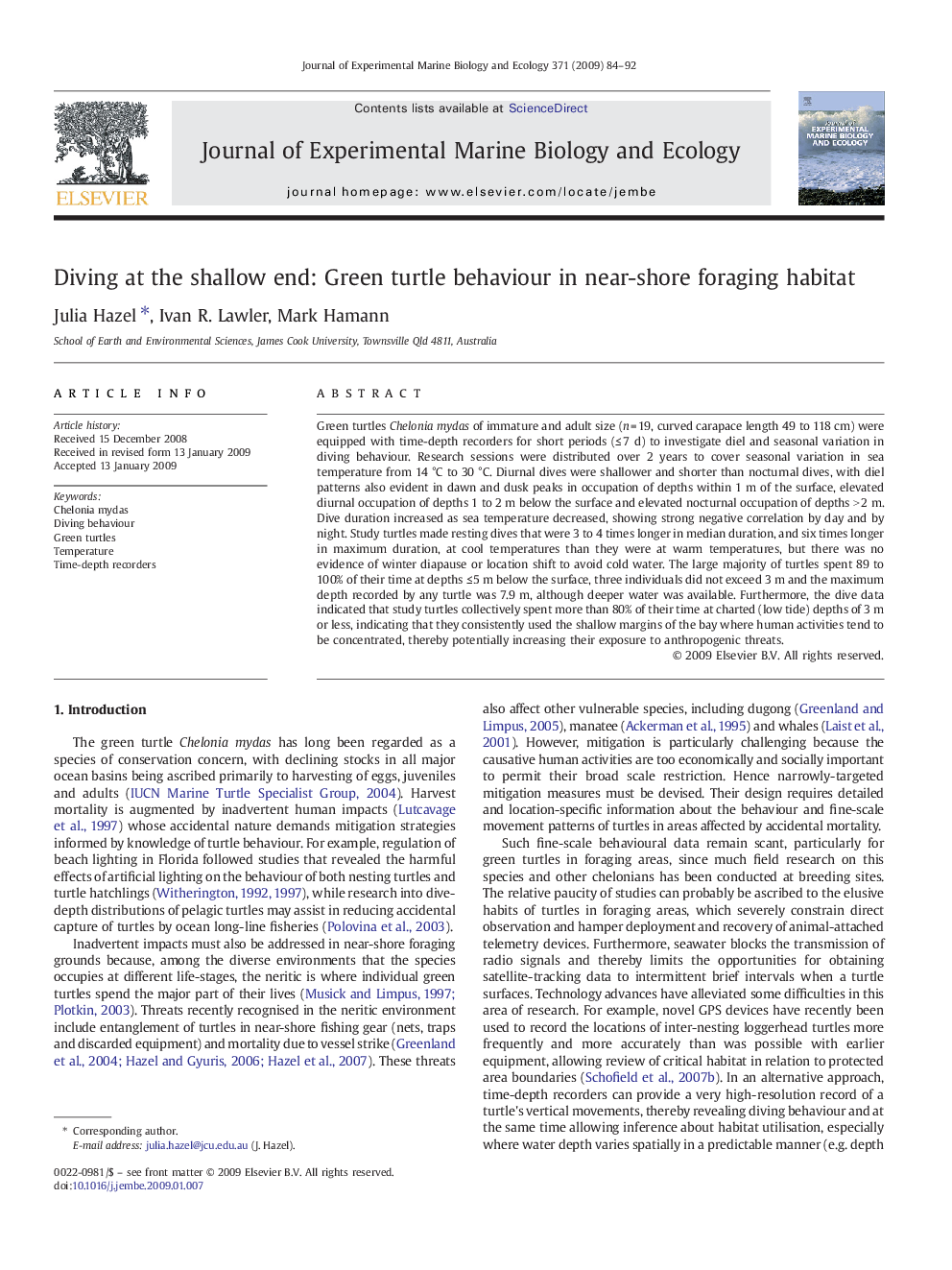| Article ID | Journal | Published Year | Pages | File Type |
|---|---|---|---|---|
| 4397016 | Journal of Experimental Marine Biology and Ecology | 2009 | 9 Pages |
Green turtles Chelonia mydas of immature and adult size (n = 19, curved carapace length 49 to 118 cm) were equipped with time-depth recorders for short periods (≤ 7 d) to investigate diel and seasonal variation in diving behaviour. Research sessions were distributed over 2 years to cover seasonal variation in sea temperature from 14 °C to 30 °C. Diurnal dives were shallower and shorter than nocturnal dives, with diel patterns also evident in dawn and dusk peaks in occupation of depths within 1 m of the surface, elevated diurnal occupation of depths 1 to 2 m below the surface and elevated nocturnal occupation of depths > 2 m. Dive duration increased as sea temperature decreased, showing strong negative correlation by day and by night. Study turtles made resting dives that were 3 to 4 times longer in median duration, and six times longer in maximum duration, at cool temperatures than they were at warm temperatures, but there was no evidence of winter diapause or location shift to avoid cold water. The large majority of turtles spent 89 to 100% of their time at depths ≤ 5 m below the surface, three individuals did not exceed 3 m and the maximum depth recorded by any turtle was 7.9 m, although deeper water was available. Furthermore, the dive data indicated that study turtles collectively spent more than 80% of their time at charted (low tide) depths of 3 m or less, indicating that they consistently used the shallow margins of the bay where human activities tend to be concentrated, thereby potentially increasing their exposure to anthropogenic threats.
